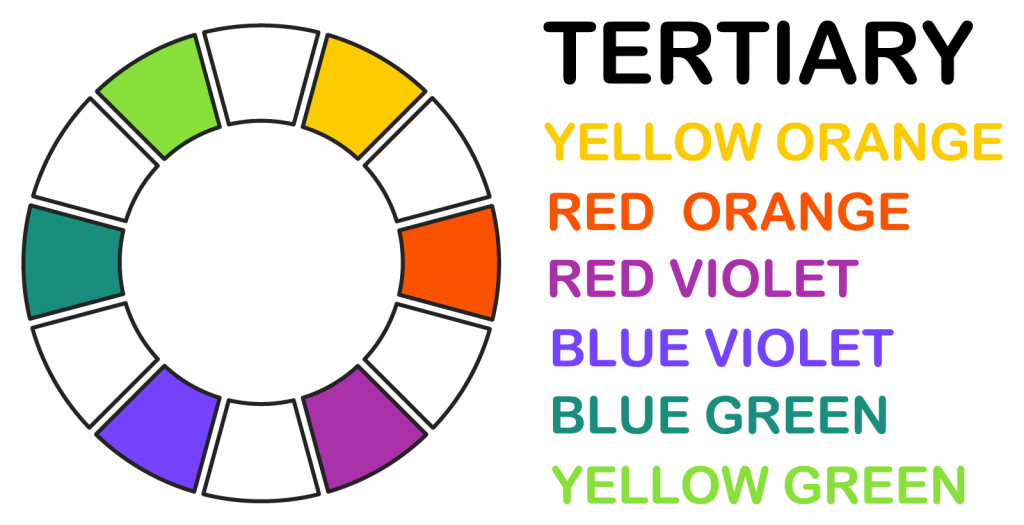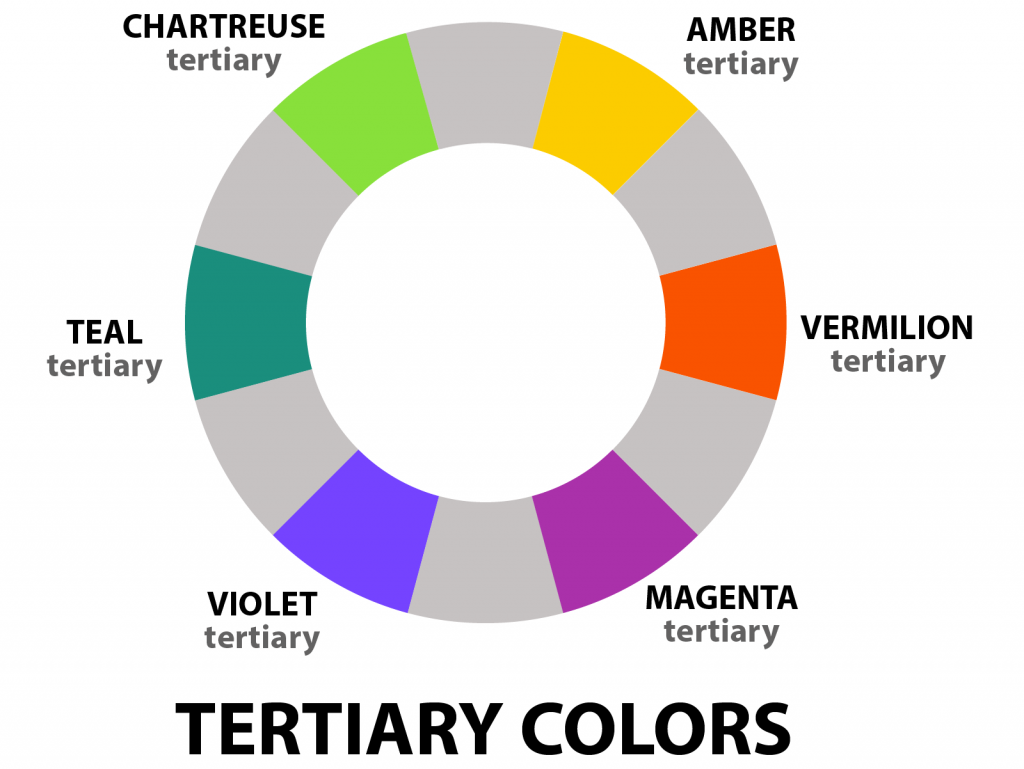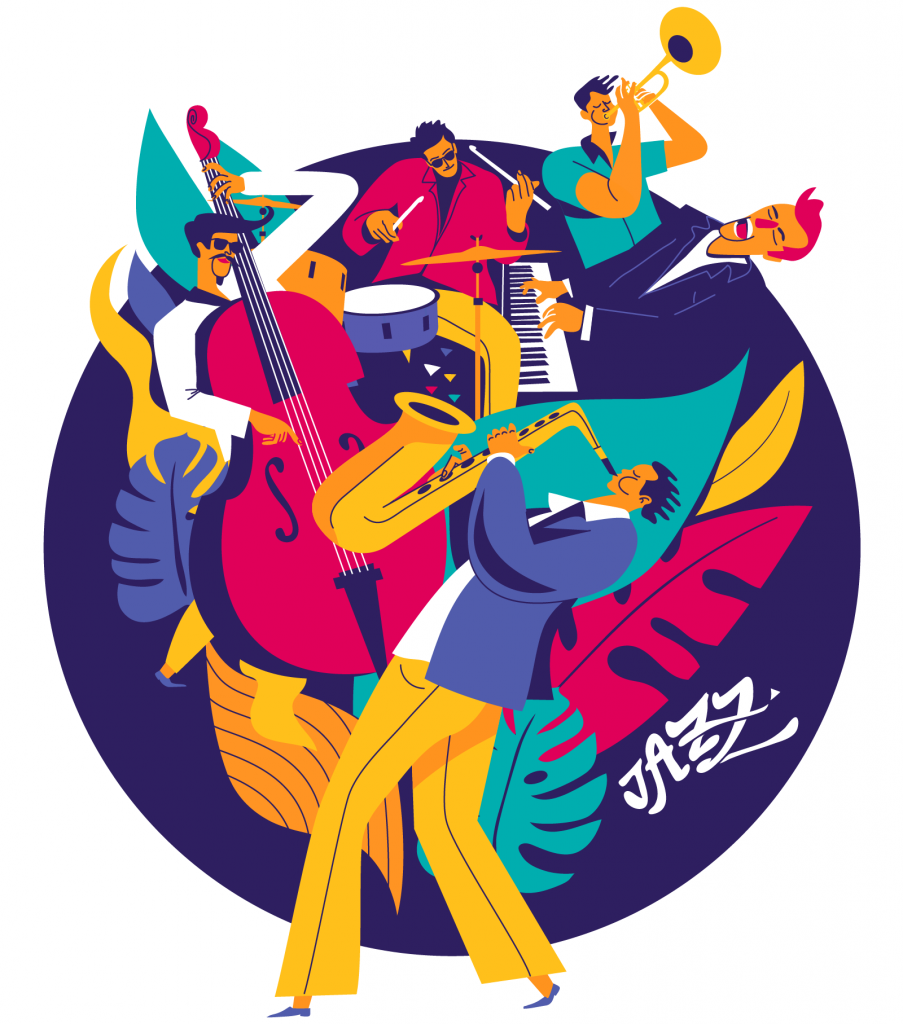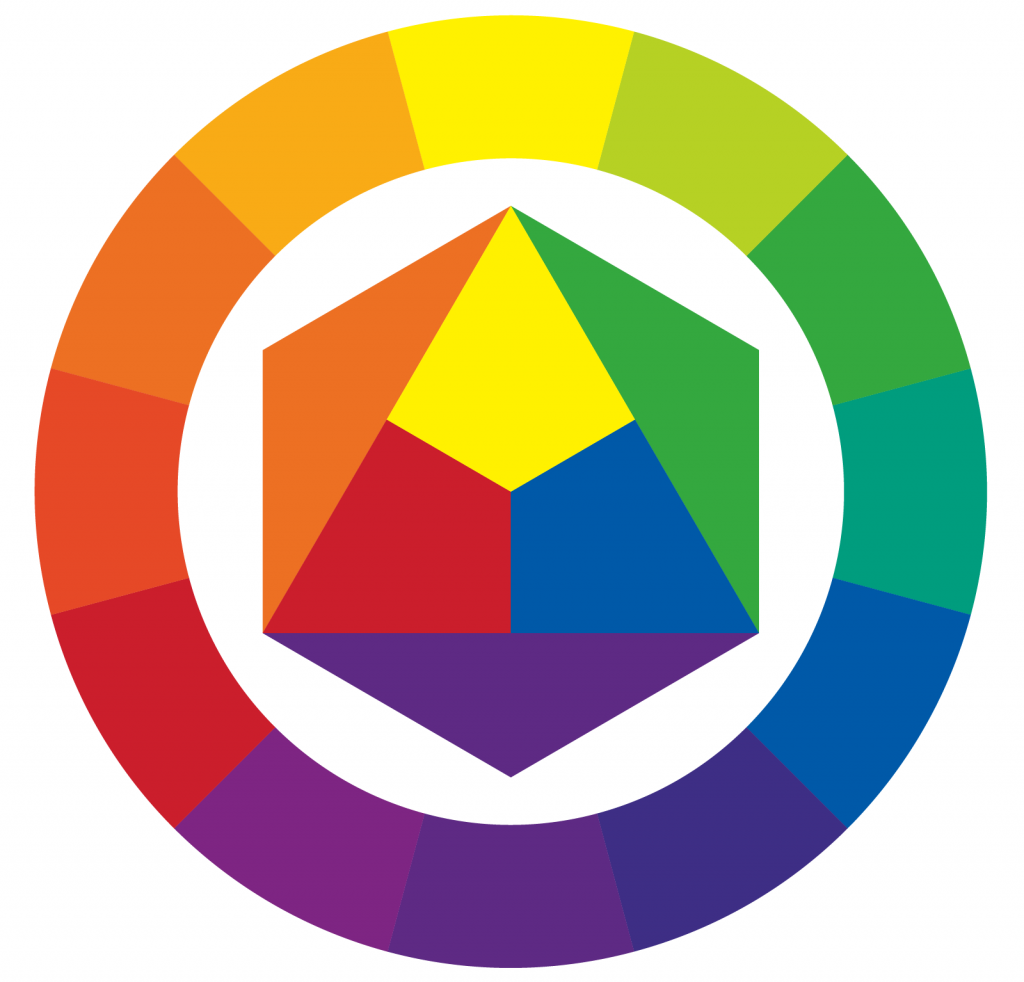How Many Tertiary Colors Are There On The Color Wheel

Traditional and digital artists alike deal with color in similar ways. Both types of artists understand iii sets of colors: primary, secondary and tertiary. Combining individual colors from these three sets gives us just almost every color our eyes can see. Those colors can be farther manipulated by adding gray, white or black, and by adjusting luminescence and saturation.
There is a lot to learn about colour and how it's fabricated. This post volition bargain mainly with tertiary colors. Considered the 3rd set on the color bike, tertiary colors outnumber both primary and secondary colors. Third colors are easier to empathise past discussing how they are derived.
Principal and Secondary Colors

Principal colors are those three bones hues from which all other colors are made. An artist working with paint or ink recognizes her three principal colors as ruby , yellow and blueish (RYB). A digital creative person working with directly low-cal understands his principal colors as blood-red , dark-green and blue (RGB). In that location are reasons for the deviation, simply we won't get into them in this post. The important point is that the three primary colors are the foundation of every other color in the spectrum.
Combining equal parts of ii principal colors produces a secondary colour. Therefore, an artist mixing paint could achieve the following colors with simple combinations:
Mixing yellow and cherry produces orange .
Mixing yellow and blueish produces light-green .
Mixing blueish and red produces purple .
This dictates that the 3 secondary colors for artists dealing with pigmented media are orangish , dark-green and purple .
For digital artists, the secondary colors are cyan , magenta , and yellow .
Tertiary Colors

Now, what happens when you combine equal parts of ane primary and one secondary color? You go a tertiary color.
Note that there are three chief and three secondary colors in the world of pigments. However, there are six third colors as follows:
Mixing xanthous and orange produces yellow-orangish .
Mixing red and orange produces red-orange .
Mixing red and purple produces ruby-purple .
Mixing blue and imperial produces blue-purple .
Mixing blue and green produces blue-greenish .
Mixing yellowish and green produces xanthous-dark-green .
It's understood in the art earth that third colors are sometimes given artistic names for artistic reasons: teal , chartreuse , vermilion , magenta , violet , and amber . These names do not alter the fact that a truthful 3rd color is derived from combining equal parts of i master and 1 secondary color.
In the RGB world, the tertiary colors are azure , violet , rose , orangish , chartreuse and bound light-green .
Starting With Hues

You lot might be interested to know that hues are the starting betoken for color mixing. Primary colors are considered pure hues because they incorporate just one pigment. For example, there are no ii pigments y'all could combine to produce blue. The aforementioned goes for red and xanthous, at least in the paint arena.
Mixing equal parts of two primary colors to create a secondary colour creates an entirely new hue. That secondary color, although being a hue, is not considered a pure hue for obvious reasons. The same goes for creating tertiary colors. You're starting with one pure hue and calculation an impure hue via a secondary color.
Why is this important? Because you don't have to start with pure hues when mixing colors. An creative person can combine whatsoever number of colors to create the perfect expect on canvas. You can mix primary, secondary and tertiary colors if y'all choose to. Yous can also offset with a hue from either of the three sets and create a shade, tint, or tone from information technology.
For the record, shades are what you become when you add blackness to a hue. Add together white and yous go a tint. Adding gray produces a tone. Utilizing different levels of blackness, white and gray, y'all tin come upwardly with all sorts of wonderful variations for your third colors.
3rd Colors Give Us Variety

Third colors are important to artists because they provide diverseness. Imagine a piece of fine art consisting entirely of the three primary colors. There isn't much variety in splotches of cherry-red, xanthous and blue. Adding secondary colors spruces things up, but yet not as much equally adding tertiary colors.
You make dissimilar colors by combining those colors that already be.
Legendary jazz musician Herbie Hancock
Herbie may take been referring to art when he fabricated that statement. But what if he was referring to music instead? As a jazz artist, he understands the concept of starting with a fundamental sound and building on information technology. Jazz is unique in that it doesn't necessarily follow the standard rules practical to other genres of music. Its rich sound is the result of skilled musicians calculation musical colour via their own instruments.
This is sort of what third colors do for art. They give it richness and texture. They allow for subtle shading here and a piffling extra detail there. Without 3rd colors, art would look very unlike. Thank goodness they exist.
Check Out the Color Wheel

In closing, you lot might want to check out the color wheel for a better understanding of the relationship between master, secondary and tertiary colors. The color bicycle is a great visual assist that shows all 12 colors divided into equal segments on the wheel. Yous can easily see the relationships between the individual colors and the three sets just past observing their positions on the wheel.
Now you know what tertiary colors are and how they are fabricated. Mayhap it'south time to get yourself some paints and experiment. Just remember that a true tertiary color is equal parts chief and secondary colors. As a digital artist, information technology is definitely easier to open up upwards your graphic design software and just enter the RGB codes for the colors you want, only now you have a basic understanding of how colour is fabricated.
Finally, information technology should be mentioned that tertiary colors are sometimes referred to as intermediate colors. Even though these two terms are used interchangeably, there is a departure depending on which colour model you use.
How Many Tertiary Colors Are There On The Color Wheel,
Source: https://www.color-meanings.com/tertiary-colors/
Posted by: durkinagoing.blogspot.com


0 Response to "How Many Tertiary Colors Are There On The Color Wheel"
Post a Comment